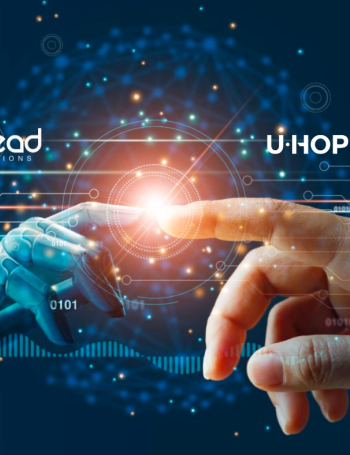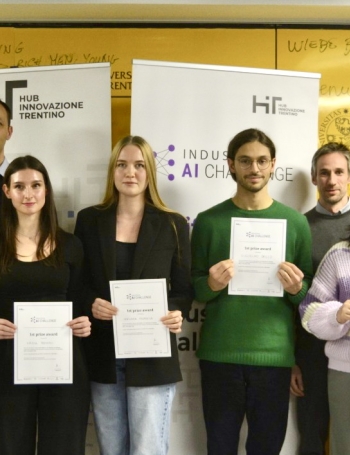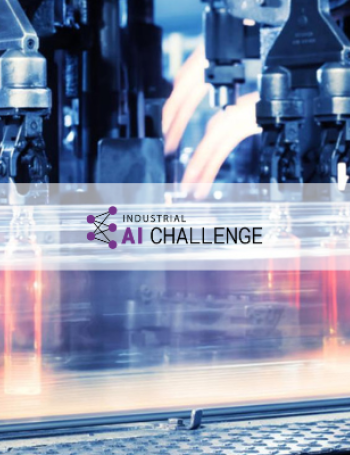Top 7 Trends in Digital Transformation 2023

Adapting to changing customer needs faster and driving more efficient growth will be big agenda items for CXOs going into 2023.
A year was driven by surging inflation, rising energy costs, growing labor shortages, and
geopolitical conflict. In this context, business leaders are increasingly looking to digital transformation initiatives.
MuleSoft in this regard has identified 7 digital transformation trends that companies can turn into opportunities to drive efficient growth, enhance productivity, and generate much-needed cost savings.
#1 trend: Automation
do more with less
53% of organizations (according to a survey by a major consulting services company) have started implementing Robotic Process Automation (RPA) to drive efficient growth, enhance productivity, and generate much-needed cost savings.
However, MuleSoft suggests that to promote efficient growth and drive significant impact in 2023, organizations must move toward more strategic, enterprise-wide automation or hyperautomation initiatives. Hyperautomation will allow organizations to lower operational costs by 30%.
In this regard, Gartner predicts that 80% of organizations will have hyperautomation on their technology roadmap in the next 24 months and the market for hyperautomation software will hit nearly $860 billion.
#2 trend: Composability
drive innovation and agility
Legacy technology and data silos are the main barriers to responding quickly to users' desire for more connected experiences.
To address this issue, more and more organizations (according to Gartner, by 2023, 60 percent of organizations) will list becoming a composable enterprise as a strategic objective and will use an increasing number of PBCs to achieve this goal.
This approach gives organizations the flexibility they need to adapt with agility to changing market demands in the pursuit of customer loyalty and growth in 2023 — and to do so in a cost-effective and strategic manner.
#3 trend: Low-No Code Tools
create varied teams to accelerate transformation
The next big challenge for organizations will be to find a way to overcome the IT skills and delivery gaps in a managed and secure way.
To overcome these challenges, low-code/no-code tools must be rolled out across the workforce.
To drive further success, in 2023 we’ll see more organizations create fusion teams that combine business and technology experts.
In this way, organizations are 2.6 times more likely to accelerate their digital business transformation, according to Gartner.
#4 trend: Total Experience (TX) Strategies
drive greater customer and employee loyalty and advocacy
The combination of initiatives to improve the customer experience (CX) and employee experience (EX) will be essential to increase revenue and address the scarcity of talents so that they can deliver more agile and resilient business outcomes.
According to MuleSoft, in 2023 an increasing number of organizations providing a total experience (TX) will outperform competitors by 25% in satisfaction metrics for both CX and EX.
Moreover, by 2026, Gartner predicts that 60% of large enterprises will use TX to transform their business models.
To support this push, organizations are focusing on integration and automation strategies. The goal is to deliver customer, employee, and partner experience innovation from a single unified platform with strong governance guardrails and a simple low/no-code user interface.
#5 trend: Data-Driven Decision Intelligence
reduce the huge cost of wasted opportunities
The challenge for organizations is that the data needed to generate actionable intelligence is often locked away in enterprise silos because of poor integration of critical IT systems.
According to MuleSoft, with enterprise data volumes set to explode over the coming years, creating a single source of truth for intelligent decision-making in an automated, streamlined way will be a priority for organizations keen to carve out a competitive advantage in 2023.
Only by embedding analytics into the data fabric, organizations can automate decision making, helping dynamically improve data usage and cut data management efforts by 70%, accelerating time-to-value.
#6 trend: Cybersecurity
more layered and integrated to protect from increasing threat complexity
Organizations are increasingly investing in edge computing to create a competitive advantage and enhance business efficiencies in 2023.
However, these accelerating trends, according to MuleSoft, have created a new headache: how to securely manage critical systems and data with the increased complexity of highly distributed IT environments.
The solution, advocated by Gartner, is to follow the cybersecurity mesh approach which it describes as “a flexible, composable architecture that integrates widely distributed and disparate security services."
What needs to be taken into consideration, to be successful, is the ability to manage connections, APIs, compositions, and automation bots from a single administration interface.
Only with universal API management capabilities, organizations can add security and compliance guardrails to integration projects in the form of centralized governance rules and reduce the financial impact of security incidents by an average of 90% by 2024 (according to Gartner).
#7 trend: Sustainability
drive ongoing IT investments
Business leaders realize that meeting sustainability goals isn’t just the right thing to do for the planet, it can also help reduce operational costs, attract the best talent, and differentiate their business as a "green crusader".
Therefore in 2023, sustainability is among the biggest goal for organizations.
Sustainability that, according to MuleSoft, organizations can achieve by implementing a "composable enterprise" strategy.
By using a composable enterprise strategy to unlock and integrate data and applications and applying automation and analytics to derive insight, organizations can create smart solutions to sustainability challenges — and they can do so faster and more efficiently than if they used legacy point-to-point integrations.
Turning trends into opportunities
What do these 7 trends have in common? Integration between different information systems.
The integration of information systems is a crucial step in Digital Transformation and allows companies to get the right flexibility to explore new business models, with the aim of serving their customers faster, reducing time-to-market, and better addressing the competitive landscape.
Thread Solutions has been a partner of MuleSoft since 2012, and since then we have been helping our customers create composable, scalable, and reliable integration systems that keep the entire enterprise ecosystem connected.
Here you can download the MuleSoft report.
Do you want to turn these trends into opportunities?
We follow each project with care and pay attention to every detail. Tell us about your project.


